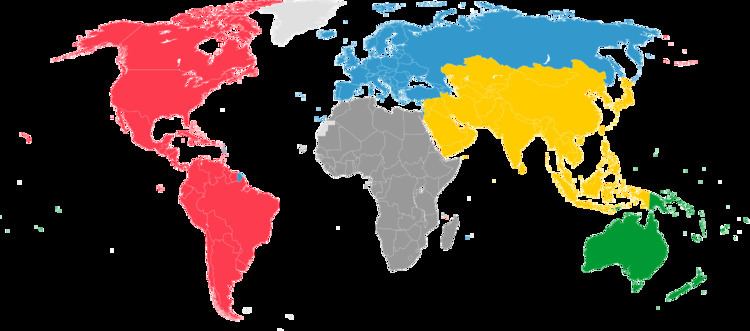Official website FIBA.com | Currently held by USA | |
 | ||
First awarded 1967 (Original Trophy)1998 (remodeled) | ||
The Naismith Trophy is a trophy awarded to the men's champion of the FIBA Basketball World Cup, and is named for basketball inventor James Naismith. The trophy was first awarded for the winner of the 1967 FIBA World Championship. The current version of the trophy was awarded for the first time at the 1998 FIBA World Championship.
As early as the first tournament in 1950, FIBA had decided to name the trophy in honor of Naismith, but did not have the funds to create the trophy. Finally, in 1965, FIBA received a US $1,000 donation and commissioned a trophy. The trophy was introduced at the 1967 tournament and was awarded to the Soviet Union, which won their first ever FIBA World Championship at the tournament.
The original trophy was remodeled and a new, updated trophy was introduced for the 1998 FIBA World Championship. The original trophy now sits at the Pedro Ferrándiz Foundation in Spain. The new Naismith Trophy was forged by Goldsmith master Günter Schoebel who came from Bad Kreuznach, Germany. The design of the trophy was inspired by the travels of long-time FIBA Secretary General Renato William Jones. The new trophy was presented to the World Champions from Yugoslavia for the first time following the Finals on 9 August 1998 in Athens.
The top part of the newly created Naismith Trophy has a lotus flower design. The decagonal rotating middle piece, with carved maps of the continents and precious stones inlaid, symbolizes the five continents. Black onyx, yellow citrine, green chyrsopase, red garnet and blue topaz represent all the regions in the world. Jones was particularly enamored with Egypt; the lotus design was inspired by the Temples of Karnak and Dr. Naismith's name is engraved on all four sides in Latin and Arabic scripts, Chinese characters, and Egyptian hieroglyphs.
The 975/1000 sterling silver on the upper and lower parts – gold plated on the inside – and the 14-carat yellow gold middle part make the cup particularly valuable and precious. The base is made of Rosa Porrhino marble and measures 20 x 20 centimeters (7.9 inches). The top of the cup has a circumference of 21 centimeters (8.3 inches). Standing 47 centimeters tall (18.5 inches), the trophy weighs a whopping nine kilograms (20 pounds).
